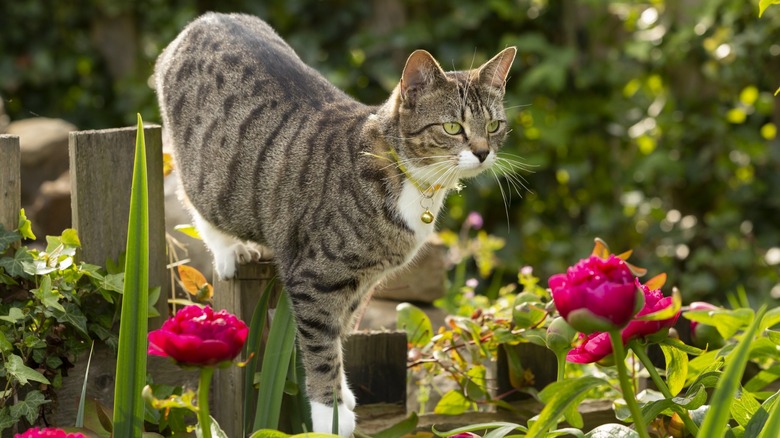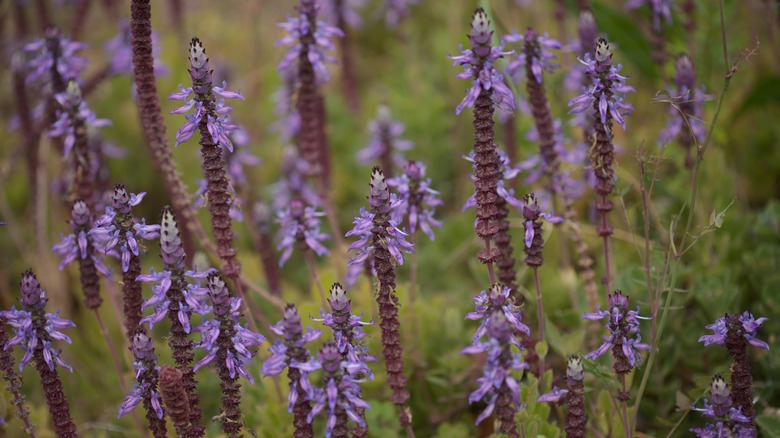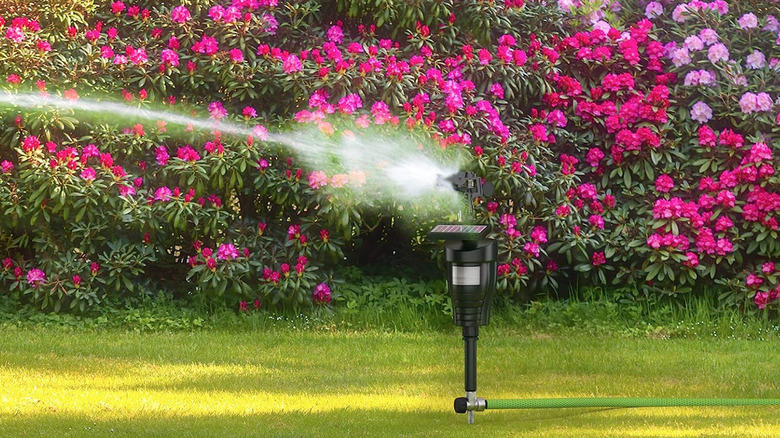Does This Popular Garden Plant Really Repel Cats? Here's What We Know
We may receive a commission on purchases made from links.
There are a ton of myths surrounding cats — for instance, you've probably heard that felines have nine lives — and getting to the truth can be a challenge. The scaredy cat plant, formally known as Coleus canina or Plectranthus caninus, is one of those myths we really don't fully understand. Rumor has it that it smells so much like a skunk that the stench repulses cats, dogs, rabbits, squirrels, and other animals, causing them to stay away. Because of this, some have used this plant to try to keep pets out of their garden. The problem is, while it does have a strong odor, whether or not it bothers cats or any other animals is debatable.
Not only that, but sources vary greatly about the effectiveness and the smell, with others claiming it reeks of dog urine instead of skunk spray. According to The Scaredy Cat, roughly 70% of cats are indeed repelled by the plant. However, they can and sometimes do simply walk around it, which means that it's typically not very effective at keeping cats out of the garden, even if they dislike the smell. Additionally, the smell is overpowering even for some humans, which makes it less-than-ideal to plant in your yard. In fact, some believe that the plant was named for marketing purposes and not so much for accuracy.
More about the scaredy cat plant
While there's debate about whether or not this plant works to scare away cats, you may still want to try it out for yourself. If so, you should know a bit about the scaredy cat plant, including that it's a member of the mint family and is indeed known for giving off an extremely unpleasant odor. While the question of whether the scent repels cats may continue to go unanswered, the plant does seem to be one to avoid getting too close to, as the rotten smell grows more putrid if you brush against it. However, it's quite beautiful with its bright blue-violet blooms, which would add an almost surreal pop of color to your landscape.
This plant is also unique because it's so easy to propagate. You can simply cut a leaf in half, plant the cut side down in potting soil, and wait as it sets roots. In fact, it's common for branches to trail, and if they hit the ground, they will often try to set roots. If this happens, it's possible to dig that portion up and transplant it somewhere else. They should bloom from late spring to the middle of summer, and they thrive with at least six hours of direct sunlight a day. Give them fertilizer monthly for best flowering results, and they rarely have problems with diseases or pests.
The best solution for keeping cats out of your garden
One thing that's pretty universal is if you have a cat using your garden for a toilet, it's going to make you angry — especially if it's not your cat. It might surprise you to know that a small amount of cat urine should not pose any sort of health risk. Any area you suspect the cat of using as their bathroom you can heavily water to dilute it, and other than root crops and leafy greens, most plants should be fine. Cat feces, on the other hand, can carry diseases, but removing it and any soil it's touching should be sufficient.
If you need to keep a cat out of your garden, there are a couple of really great ideas other than planting the scaredy cat plant that are completely harmless to cats and other animals. The first one is motion-activated sprinklers, which you can find on Amazon for about $40. They're solar-powered and equipped with a jet-blast of water that should repel cats without harming a single hair. If that doesn't delight you, place a chopstick every 8 inches or so apart in the soil where you don't want the cats to go. If you own an outdoor cat, always put a litter box somewhere outside to deter them from going to the bathroom in your garden.


